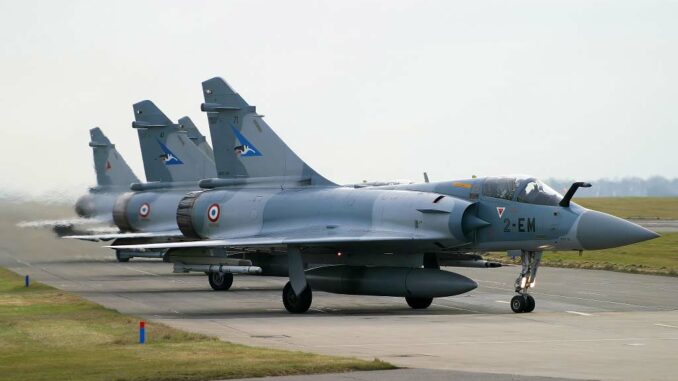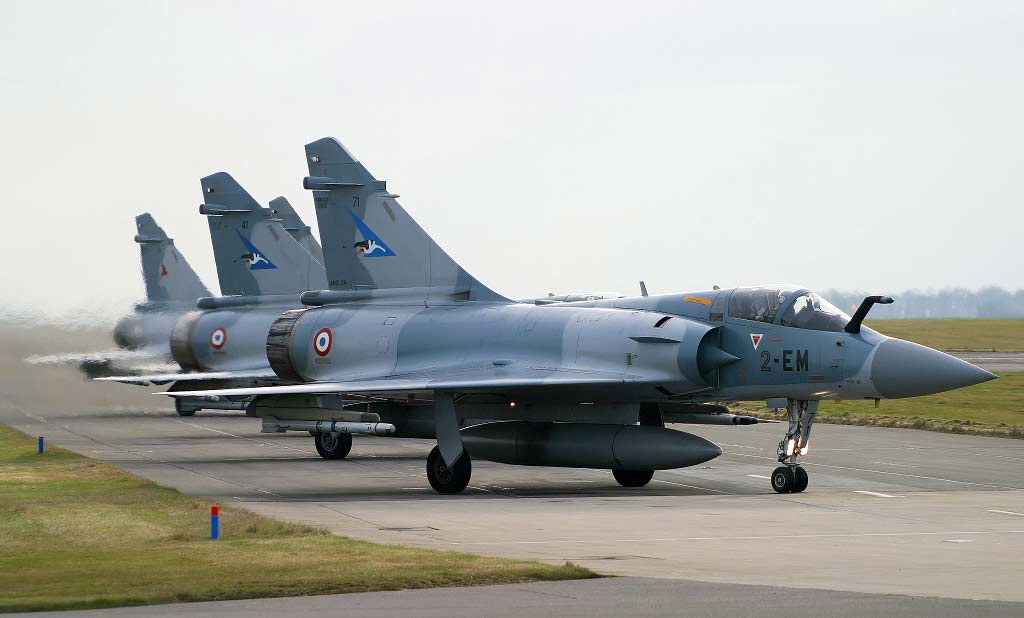
Detailed analysis of the mission of French Mirage 2000 fighter jets on patrol in Baltic airspace for NATO, their challenges and implications.”
Four French Mirage 2000 fighter jets flew 1,600 km to the Siauliai air base in Lithuania, taking over from Italy, along with Belgium, in a four-month NATO air policing operation. The mission included in-flight refueling with a French tanker aircraft, underlining the logistical and operational capabilities required to maintain NATO’s presence in the Baltic region.
The reinforced presence of French Mirage 2000 fighter jets in Baltic airspace marks a significant milestone in NATO’s air policing operation. This mission takes place in a complex geopolitical context, where interceptions of Russian aircraft approaching NATO airspace are becoming routine. This article explores in detail the nature of this mission, its strategic implications and the logistical challenges it presents.
Mirage 2000 deployment
From a French military base, the Mirage 2000s made the 1,600 km journey to the Siauliai air base in Lithuania. This deployment marks an important transition in NATO operations, with France, in collaboration with Belgium, taking over from Italy. This rotation illustrates the solidarity and commitment of NATO members to ensuring the security of their airspace. The choice of Mirage 2000 aircraft, renowned for their agility and combat effectiveness, is particularly well-suited to this type of mission.
Logistics and in-flight refueling
In-flight refueling, carried out with a French tanker aircraft, is a key element of this operation. The procedure, which requires extreme precision, involves bringing the fighter jets to within 10 meters of the tanker. This maneuver demonstrates the technical skills of the pilots and France’s ability to support extended missions far from home base.

Cooperation with Finland
Finland’s recent integration into NATO adds a new dimension to this mission. Finnish F/A-18 fighter jets, also refueled by the French tanker, now patrol the Baltic region under NATO aegis. This collaboration underlines NATO’s enlargement and the importance of unity in the face of security threats in the region.
Strategic implications
NATO’s increased presence in the Baltic, notably with the involvement of France and Finland, sends a strong message internationally. It demonstrates NATO’s ability to mobilize quickly and effectively to protect its members and deter potential aggression. This mission also raises questions about the balance of forces in the region and the evolution of defense strategies in the face of Russian maneuvers.
Challenges and prospects
Conducting an operation of this scale requires impeccable logistics and coordination between several NATO member countries. Challenges include aircraft maintenance, management of human and material resources, and communication between the various air forces. In the long term, this mission could influence NATO’s defense policy and strategic posture in the region.
The French Mirage 2000 mission in the Baltic represents an important milestone in NATO’s defense policy. It illustrates not only the alliance’s ability to ensure the security of its members, but also its willingness to adapt to an ever-changing geopolitical environment. This operation highlights the importance of international cooperation and advanced technical capabilities in maintaining peace and stability in strategic regions of the world.
War Wings Daily is an independant magazine.